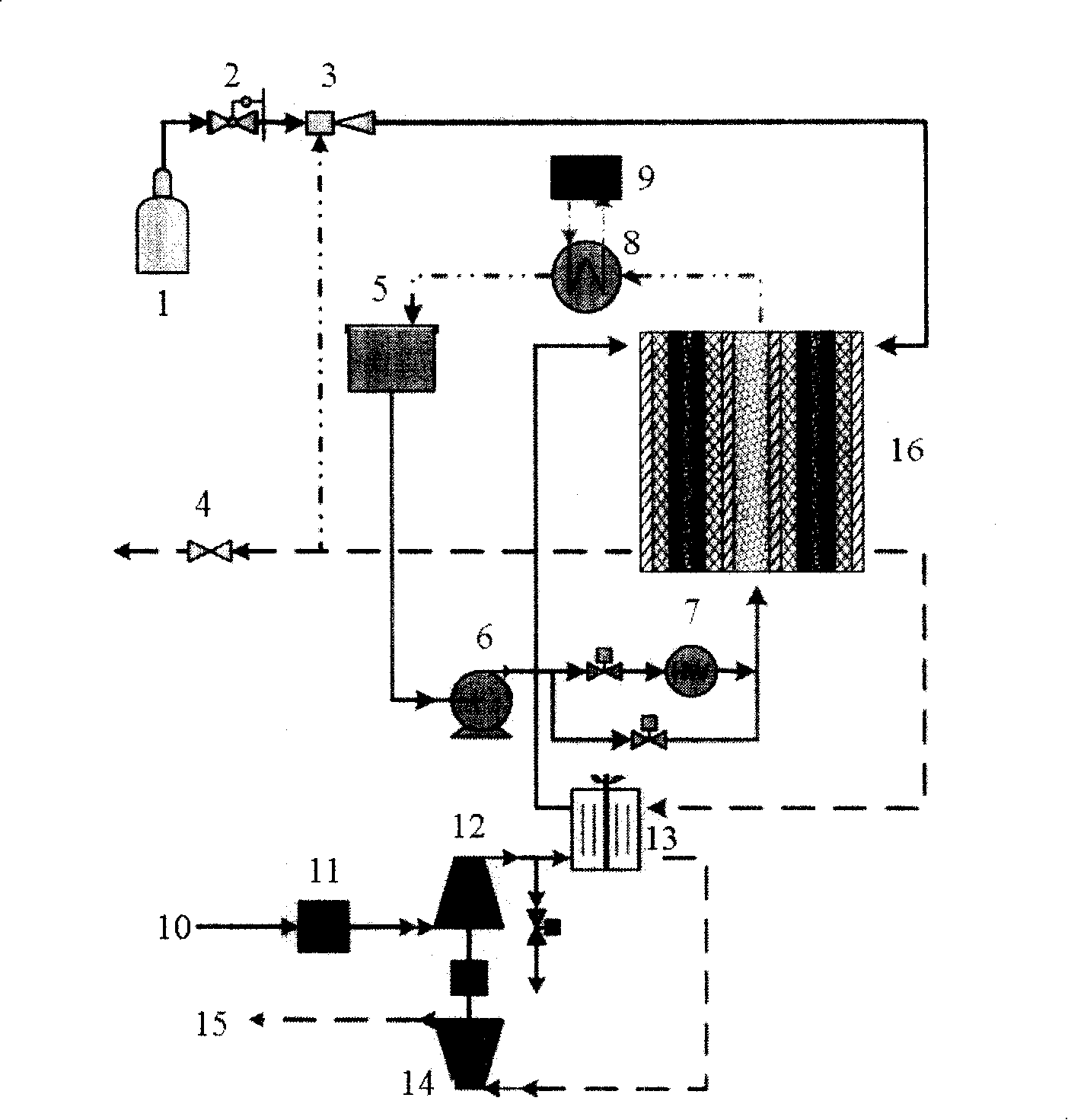Cooling method and system for high temperature proton exchange membrane fuel cell battery
A technology of proton exchange membranes and fuel cell stacks, which is applied to fuel cell parts, solid electrolyte fuel cells, fuel cells, etc., can solve problems such as residual liquid water and increase system complexity, and achieve improved heat transfer efficiency and energy efficiency. Low power consumption, safe and reliable system
- Summary
- Abstract
- Description
- Claims
- Application Information
AI Technical Summary
Problems solved by technology
Method used
Image
Examples
Embodiment Construction
[0019] In order to better understand the technical solution of the present invention, the high temperature proton exchange membrane fuel cell system of the present invention will be further described below in conjunction with the accompanying drawings.
[0020] Such as figure 1 Shown:
[0021] The three fluid circulation circuits in the system are: air, hydrogen and refrigerant circuits.
[0022] Cooling circuit: radiator, water tank, (water pump).
[0023] It consists of a high-temperature proton exchange membrane fuel cell stack, a water tank, a hydrogen source and an air compressor.
[0024] The hydrogen gas source is connected to the hydrogen gas inlet of the battery pack through a pressure reducing valve and a hydrogen gas reflux device, and the hydrogen gas outlet of the battery pack is respectively connected to the atmosphere and the hydrogen gas reflux device through a three-way valve;
[0025] The air is connected to the air inlet of the battery pack through the ai...
PUM
 Login to View More
Login to View More Abstract
Description
Claims
Application Information
 Login to View More
Login to View More - R&D
- Intellectual Property
- Life Sciences
- Materials
- Tech Scout
- Unparalleled Data Quality
- Higher Quality Content
- 60% Fewer Hallucinations
Browse by: Latest US Patents, China's latest patents, Technical Efficacy Thesaurus, Application Domain, Technology Topic, Popular Technical Reports.
© 2025 PatSnap. All rights reserved.Legal|Privacy policy|Modern Slavery Act Transparency Statement|Sitemap|About US| Contact US: help@patsnap.com

